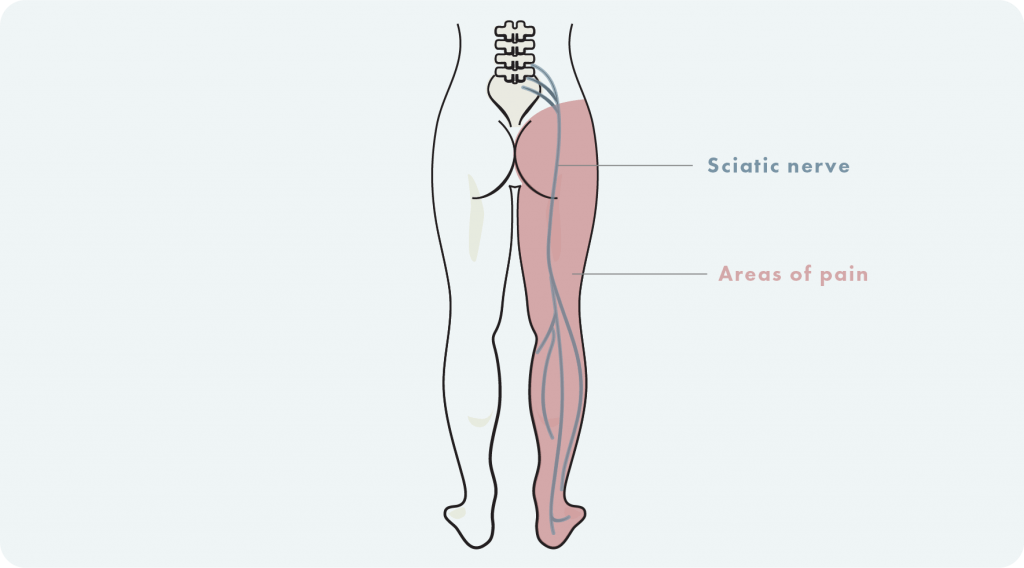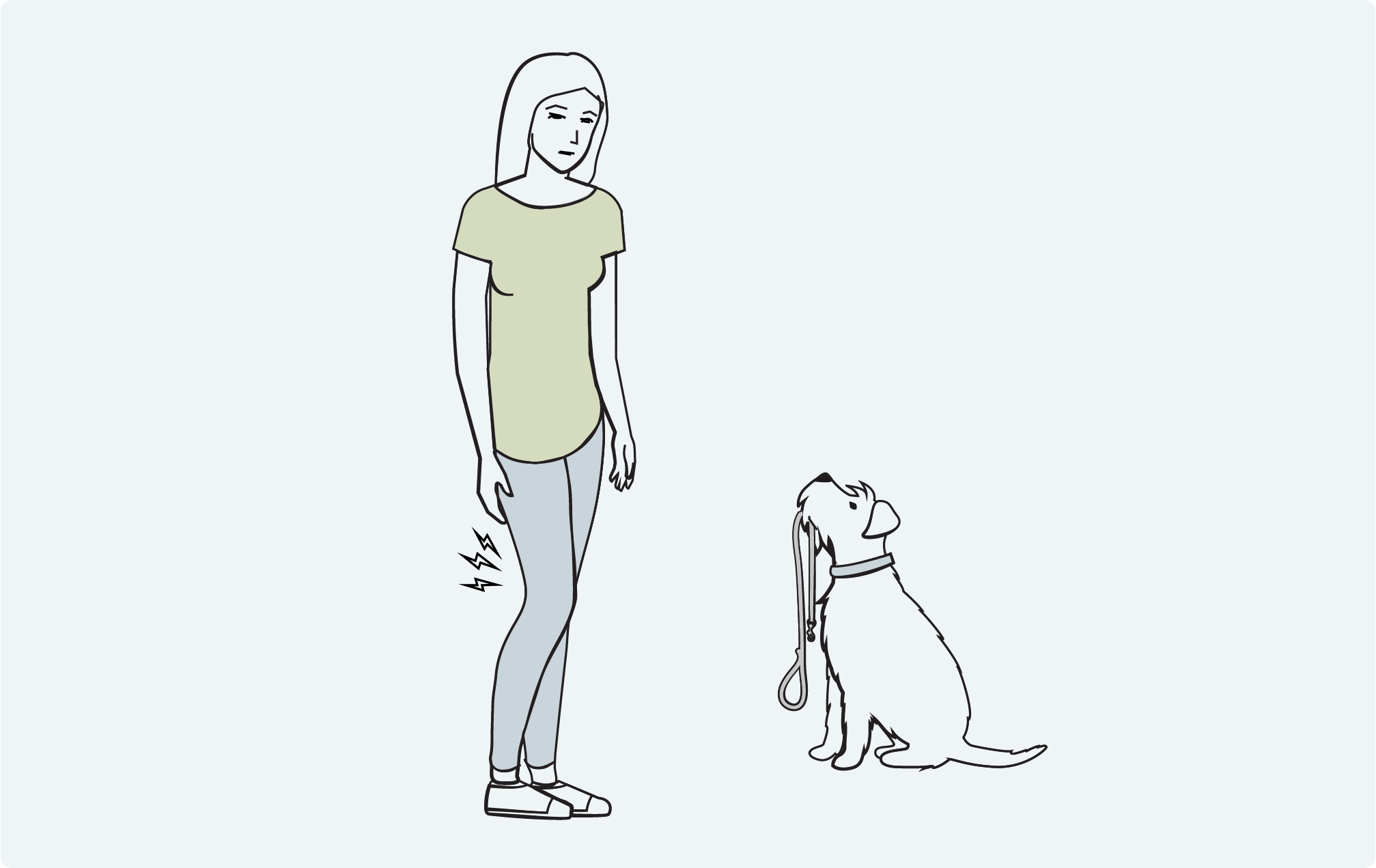What is Sciatica?
Sciatica (pronounced sigh-AH-tick-uh) affects many people at some point in their lives, and can cause significant discomfort and dysfunction. Around 40% of the population will experience sciatica at some point in their lives. What is sciatica? Is there anything that can be done to help those who are suffering from it?
What is the sciatic nerve?
The sciatic nerve is the largest nerve in the body. In fact, it’s nearly as big around as your thumb! It’s also the longest nerve in the body, because it travels from the lower back all the way to the toes. It’s made up of nerve fibers which exit the spine in the lower back, then come together to form the large sciatic nerve.
The sciatic nerve serves as the primary nerve to the leg, including the back of the thigh as well as well as the entire lower leg and foot. It carries the sensation from these areas, and also the motor impulses that control many of the muscles of the leg.

What is sciatica?
Sciatica occurs when the nerve fibers that form the sciatic nerve are compressed (squeezed or pinched) at some point. By affecting the function of the nerve, this compression leads to a variety of symptoms, which are typically felt in the leg and foot. Sciatica is the term for this constellation of symptoms. It’s not actually a medical disorder in itself; rather, it’s a symptom of an underlying medical disorder.
The term “sciatica” implies that the cause of the disorder is damage to the sciatic nerve itself. In fact, older medical belief was that this was the case. However, with more advanced imaging technology, we’ve been able to discover that the most common cause of sciatica is actually nerve compression in the lower back. The sciatic nerve originates from spinal nerves in this part of the spine, and what we term “sciatica” is usually compression of these nerve roots as they leave the spinal cord. Research indicates that in 90% of cases, the cause of sciatica is a herniated disc in the the lower back.
There are also other possible causes. For example, a muscle spasm can cause sciatica; the most common cause is a spasm of the piriformis muscle, a deep muscle which runs from the lower back to the top of the thigh bone. A spasm in this muscle can compress the sciatic nerve itself. Other possible causes include tumors of the spine, spinal stenosis (narrowing of the spinal canal), and dysfunction in one of the sacroiliac (SI) joints (the joints between the bottom of the spine and the pelvis).
What are the symptoms of sciatica?
Pinching a nerve may interfere with its function by causing abnormal signals to be transmitted, or by blocking signals that should be transmitted. Both of these phenomena may occur in patients with sciatica. Abnormal signals transmitted along the nerve may cause sensations of tingling, burning, or pain. Blocking nerve signals may lead to numbness or, in more advanced cases, muscle weakness.
These symptoms of sciatica are generally felt on one side of the body. The tingling or pain is sometimes felt in the lower back, around the area where the nerve compression is usually occurring. These sensations may also radiate down the back of the thigh, and may be felt even farther down the leg in the toes or feet. In many cases, the pain is greater in the leg and/or foot than it is in the lower back itself, even though the ultimate cause of the symptoms is located in the lower back. This is because the brain interprets any abnormal signals coming from a nerve as being signals from the area that the nerve usually senses (in this case, the leg and foot).
How can chiropractic help?
With sciatica, the important thing is to take the pressure off of the nerve fibers that form the sciatic nerve. Chiropractic treatment can be helpful for people suffering from sciatica. It helps to restore function to the joints of the spine as well as the SI joints, which can reduce inflammation and reduce irritation of the nerve. Tension on muscles and connective tissues in the area may also be relieved. All together, this restoration of function can help to remove the pressure on the fibers of the sciatic nerve, allowing it to return to healthy functioning.
Studies have shown that chiropractic care is effective for patients with sciatica, and helps to reduce pain and improve function for these patients. Even when a herniation of a spinal disc is the cause of sciatica, surgery is generally not recommended as the first line of treatment. It’s best to try other methods of treatment first, because these will often be effective and will avoid the risks of surgery.
If you’re among the millions of Americans suffering from sciatica, Dr. Barnes will be happy to discuss your treatment options with you. Please contact our office to schedule an appointment and learn more about how chiropractic might help in your case.

